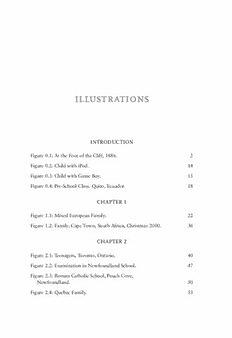
A Cultural History of Childhood and Family in the Modern Age PDF
286 Pages·2010·10.516 MB·English
Most books are stored in the elastic cloud where traffic is expensive. For this reason, we have a limit on daily download.
Preview A Cultural History of Childhood and Family in the Modern Age
Description:
The period spanning the 15th to the 17th Centuries saw an unprecedented interest in childrearing and the family. Renaissance humanist thought valued the education of children while promoting the family as a mirror of a well-ordered society, based on class, gender, and age hierarchies. Protestant and Catholic reformers and state-sponsored disciplinary measures further reinforced authority within the family, with marriage seen as a primary instrument for moralizing sexual customs. The proliferation of printed books and artworks representing the family popularized models of domestic life across Europe and its newly acquired colonies. At the same time, high mortality, repeated wars, poverty, increased migration, and geographical mobility severely undermined these idealized notions of family and childhood, giving rise to a wide range of unconventional and highly unstable households.As with all the volumes in the illustrated Cultural History of Childhood and Family set, this volume presents essays on family relationships, community, economy, geography and the environment, education, life cycle, the state, faith and religion, health and science, and world contexts.
See more
The list of books you might like
Most books are stored in the elastic cloud where traffic is expensive. For this reason, we have a limit on daily download.
